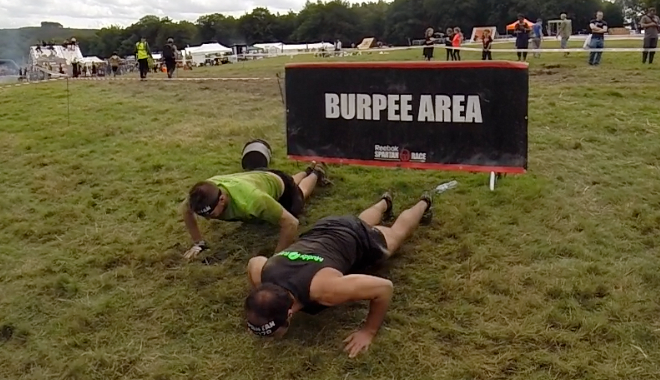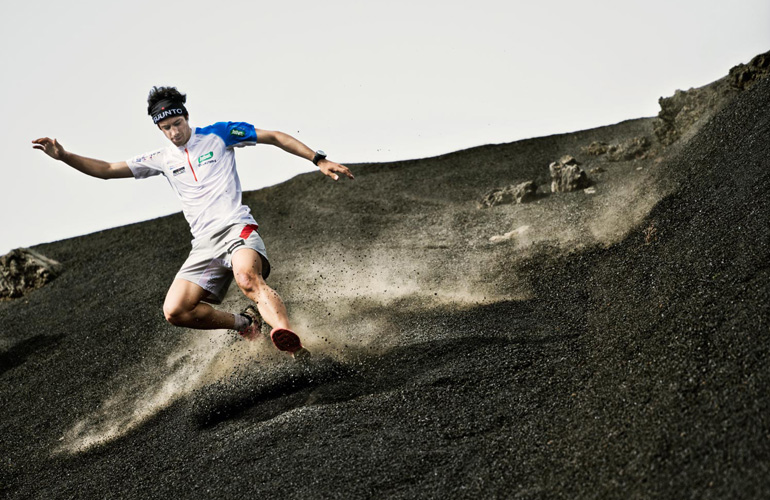I can still remember my first Spartan Race. The butterflies in my stomach from having no idea what to expect was almost unbearable. Walking from the parking lot, to registration, and start line I see Spartans returning to their cars bloody, covered in dirt and mud, beaten down, but with a huge smile on their faces, wishing me good luck.
As a former athlete and current strength coach, I know it should not come down to luck. The point of a proper training program is to have the ability to take control and be prepared for anything that may come your way.
If you have run a Spartan Race before you know that sometimes you cannot plan for everything. For my first race I had not done much research. I heard some friends talk about it so I thought I might as well try one out before my clients start asking me my opinion on it. My program consisted of some of the basics including a solid running program and strength training. I just hoped my athletic ability would take me through the rest.
To see the look on my face as the volunteer handed me a spear. “You want me to do what? How many tries do I get?” I’m sure you can guess how this went. 
Since then I have run a few more races and learned some of the basics to help get through the race cleaner like, throwing a spear, climbing walls, and carrying buckets. Most people now know about Spartan Race and have an idea of the basic obstacles to prepare for. But this isn’t about those. Instead I found three ways to train that are often forgotten about.
#1 Train Breathing Mechanics
Breathing is life, but it is also conditioning. We breathe voluntarily and involuntarily. Most people that train hard or race, rarely understand how to use breathing to help them.
It is often a sign of weakness in sports. When an athlete sees an opponent breathing through their chest, hands on their knees, and essentially hyperventilating, they know it is a perfect time to attack.
I often determine how conditioned a person is not on how hard they can push, but how fast they can recover and get their breathing under control again. This is something that should and must be trained with the same importance as squats, push ups, and spear throws.
First, start your workout with some diaphragmatic breathing exercises. This is the foundation of your breathing. Being able to use your diaphragm for breathing will allow a multitude of benefits. The most important is the ability to take a deeper breath. If you look at human anatomy and physiology we see that the majority of the blood that is in the lungs is at the bottom due to gravity. We breathe to get oxygen into the blood and waste products out, so those deep breaths are critical.
Try crocodile breathing for your warm up. Lie on your stomach resting your forehead on your hands. Take a deep slow breathe in your nose pushing your belly into the floor. Your lower back should rise. Hold this for a few seconds and slowly exhale through your mouth. Make sure to completely exhale as your lower back starts to lower. Squeeze your abs at the end to get all of the air out and repeat for 8-10 breaths.
The second area of training for breathing is during your workouts (and during the race). You are most likely doing interval training or taking rest between sets of your strength exercises. Try making your priority to return to normal breathing. Still practice using your diaphragm here. After a hard interval bout you will likely lose control of your breathing. Take time and do not start your next interval until you have control. During the race you probably will be walking from time to time. During your walk slow down your breathing. Once you slow it down, try running again.
Breathing may not seem like a sexy thing to train but it is amazing the results you can see. Read number 3 below for more on recovery, but breathing is our window to the nervous system. The nervous system is what controls your recovery from your workout. Most think it is simply letting your muscles recover from a workout but the nervous system controls everything. Controlling your breathing can help increase parasympathetic nervous activity which is vital for optimal recovery.
#2 Train Running Downhill
 During my first race I knew there would be some tough hills to climb. What goes up must come down. Many racers forget the importance of eccentric training or lengthening your muscles. This is where most injuries will occur. Someone gets up the wall, yet jumps off and gets hurt. Think of eccentric training as absorbing force. You first need to absorb force before you work on producing it.
During my first race I knew there would be some tough hills to climb. What goes up must come down. Many racers forget the importance of eccentric training or lengthening your muscles. This is where most injuries will occur. Someone gets up the wall, yet jumps off and gets hurt. Think of eccentric training as absorbing force. You first need to absorb force before you work on producing it.
Eccentric training is critical for injury prevention and improved performance. The muscles will adapt to this training by becoming stronger and more elastic. The joints will also strength the connective tissue.
To start this type of training make eccentrics part of your movement preparation with altitude jumps. This is a fancy way to say just stand on a box or platform, step off and land as softly as possible. Perform a few reps to practice absorbing force.
Once a baseline has been developed, make sure you find some hills to run down. Preferably trails for softer impact on the joints. This should not be trained all the time. Any time performing eccentrics, make sure you allow for proper recovery and adaptation. Once a week try focusing on the downhill portion of your runs. Many work to prepare for getting up hills but then struggle getting down or lose valuable time.
#3 Do Not Forget About Recovery
There is a growing problem in the fitness industry. We are finding great and innovated ways to make workouts harder, faster, stronger, and more intense, but there is little to no focus on the importance of recovery.
We often don’t realize that you get weaker during a workout. You get stronger recovering. The two most important aspects of recovery are sleep and nutrition, and in that order. If you are not getting enough sleep you are not getting as strong as you could. How much you need is different for everyone but it is most likely around 8 hours for you.
There are simple things you can do to help improve your sleep. Try some of these tips for a better nights sleep.
- Turn off all electronics in bed especially anything with a LED screen.
- Go to bed the same time every night.
- Reduce caffeine intake
- Write down any thoughts running through your head to help get them out.
- Trying eating more carbs during your last meal of the day. (Healthy whole grain carbs)
- Remove any factors limiting sleep (noise, light, pain…)
 After better sleep patterns have been established, nutrition can become the focus. There are million and one different ways we can approach nutrition. My main advice is to focus on what you can add to your diet, not take away. With all the diet crazes out there we are consumed with all the things we must eliminate from our diet since so many are afraid of calories.
After better sleep patterns have been established, nutrition can become the focus. There are million and one different ways we can approach nutrition. My main advice is to focus on what you can add to your diet, not take away. With all the diet crazes out there we are consumed with all the things we must eliminate from our diet since so many are afraid of calories.
Remember though when you eliminate calories you also eliminate nutrition. We need a well balance diet with fats, carbs, and proteins, plus all of the other nutrients we find in food. The body needs a variety of nutrients to complete the recovery process, restore glycogen stores, and rebuild stronger muscles. This is not an excuse to eat anything you want, but a solid nutrition program is vital for your success.
My final points on recovery after a better sleep and nutrition plan has been implemented is take time off and help speed up recovery. We cannot train hard all the time. We must take days off to help our bodies recover. The most practical way to apply this is following the high low method.
This method simple says that every time you have a high intensity workout, you follow it up with a low intensity workout. This way you are still doing something but allowing for more recovery.
It does not hurt to go through contrast therapy after a tough workout either. Try this at home. Fill up your tub with some ice water. Hop in a hot shower for about 1 minute. Keep the water running and jump out into the cold bath for 30 seconds. Repeat this for 4-6 times. It is exhilarating and helps bring back your nervous system for a quicker recovery.
I hope these tips help you in your future and current training. Train hard, breath, and recovery.
Aroo
Mike Deibler MS, CSCS, SGX

